
Perennial vegetables are a fantastic way to incorporate low-maintenance crops into your garden. Unlike annual crops that require constant attention, planting perennial vegetables only requires minimal maintenance. They are a great addition to any garden and guaranteed to simplify your gardening process. Not only that, but you will be contributing to a more sustainable way of living by reducing repetitive tasks that can be time-consuming and exhaust your energy.
Picture harvesting your favorite fresh produce year after year without the hassle of replanting and carefully tending to its every need. By planting perennial vegetables, smaller gardens can thrive and reap the rewards of fresh produce without undertaking any daunting tasks. So, why not take the plunge and add some vitamin-packed perennial vegetables to your garden? You won’t regret the decision.
Benefits of Perennials
Growing perennial vegetables in your garden can provide a sustainable source of fresh produce for years to come. These plants are known for their unparalleled endurance. They continue to grow for several years, given the optimal conditions. With each passing year, the production of these perennials can increase, enabling you to become more self-reliant and self-sufficient when it comes to gardening. The best part? Perennial vegetables are as easy and low-maintenance as caring for perennial flowers. No annual tilling, sowing, or planting required! Many varieties of perennial vegetables are also resistant to common gardening issues such as pests, drought, disease, and weeds.
In addition to their impressive resilience, perennials can also help you save money. This is done by eliminating the need to purchase new seeds or seedlings year after year. Some of these fantastic plants are even self sowing!
This also means that perennials are able to extend your harvest. Whilst most seedlings are still waiting to be transplanted, many perennials will be steadily providing an abundance of food.
Perennials can be fantastic additions to food forests, hedgerows and fruit tree guilds. They are able to provide an extensive root system which prevents erosion. Some function as living fertilizers by fixing nitrogen, enriching your soil. Not to mention how much your native beneficial insects will love the constant habitat.
We love to use perennials for year round shade to protect smaller plants from both the harsh weather. Not only do they provide shade, but they also mulch the soil. This improves the soils water holding capacity- a lifesaver if you live in drought prone areas or just want to save on your water bill. This mulch assists in building top soil and sequesters atmospheric carbon.
Downsides of Perennials
There are many reasons why perennials are a great addition to any garden. Not only are they incredibly resilient to pests, drought, disease, and weeds, but they can also self-seed, making them a low-maintenance choice for gardeners. However, there is a potential downside – some perennials can become too resilient and take over your garden. This is where container gardening comes in handy. By planting certain perennials in containers, you can easily control their growth and prevent them from taking over your garden.
It’s also important to note that some perennials can take a few years to fully establish themselves. This means that you may not see a significant harvest for the first few years. However, once they do become established, perennials can produce an abundant harvest year after year. When choosing a location to plant your perennials, keep in mind that they can become a permanent fixture in your garden. So, choose a spot that you’re okay with becoming a perennial patch for years to come.
Due to this permanence you will be unable to perform crop rotations. This means that in the event that a pest or disease getting past the perennials defense, you may have to start your perennial patch from scratch.
1. Asparagus- Asparagus officinalis

Asparagus, an incredible perennial vegetable, is an exceptional addition to any garden. One of its key advantages is the large harvest it provides every year, increasing as the plant grows. For over a decade, you can enjoy a healthy and profitable plant if you put it in a sunny location with well-draining soil. You’ll have two options for growing them. This can be either from seed or by purchasing crowns. It is worth noting that the plants take about three years to mature fully; if you’re in a hurry, finding asparagus crowns from a nearby garden shop might be your best option. But I believe that the wait for these flavorful perennials is certainly worth it.
To add to its charm, not only do asparagus plants provide a delightful harvest, but they also produce petite bell-shaped flowers. These flowers make them a favorite among the native pollinators in my own garden. They’re also the tell-tale sign that some delicious asparagus stalks are about to emerge! Asparagus prefers to be planted in the ground, mainly because it has a large root system that doesn’t do well in containers. However, if you’re unable to plant them in the ground, make sure you select a pot with at least a depth of 45 centimeters. This is the ideal depth to ensure your plant has what it needs for a bountiful harvest.
Pet safety; Whilst cooked asparagus is safe, the asparagus fern is the inedible part of the asparagus. Ensure that pets don’t consume berries or ferns.
2. Egyptian Walking Onions- Allium proliferum

The Egyptian walking onion is a stunning plant that never ceases to amaze me with their incredible growing abilities. Whether you’re an experienced gardener or just starting out, these plants are a must-have addition to your garden. Their unique ability to create small and delicious onions leaves me in awe as I watch them slowly creep across the garden.
These beautiful plants thrive in full sun and are straightforward to propagate. They’re the perfect addition to any mixed border, adding a touch of uniqueness to your flower bed for years to come.
There are small shallot bulbs that they produce at the head of each plant, in addition to a primary root bulb. The top bulbs become too heavy and ultimately cause the plant to fall over, allowing the bulbs to plant themselves in the soil. This fascinating feature has given them the nickname, “walking onions”, and enables them to travel over two feet in a year, which is truly impressive!
Pet safety; As with all alliums, do not feed to pets.
3. Rhubarb- Rheum rhabarbarum

Rhubarb, a widely popular and sought-after perennial plant, is revered for its delicious and versatile stalks. With a distinct tart flavor, rhubarb is perfect for making jams, pies, and other culinary delights.
One of the most amazing things about this plant is its longevity. A single rhubarb plant can produce bountiful harvests for over two decades before needing to be replaced. This makes it a valuable addition to any garden or farm.
One important thing to keep in mind is to exercise patience when growing rhubarb. You must refrain from harvesting in the first year as this period is critical for the plant to establish itself fully, much like asparagus. With its enduring nature and delectable taste, rhubarb is a must-have for any gardening enthusiast or food lover.
Pet safety; The entire rhubarb plant is poisonous to dogs. The leaves are also dangerous to humans, so make sure to only use the stems for your cooking adventures.
4. Sea Kale- Crambe Maritima
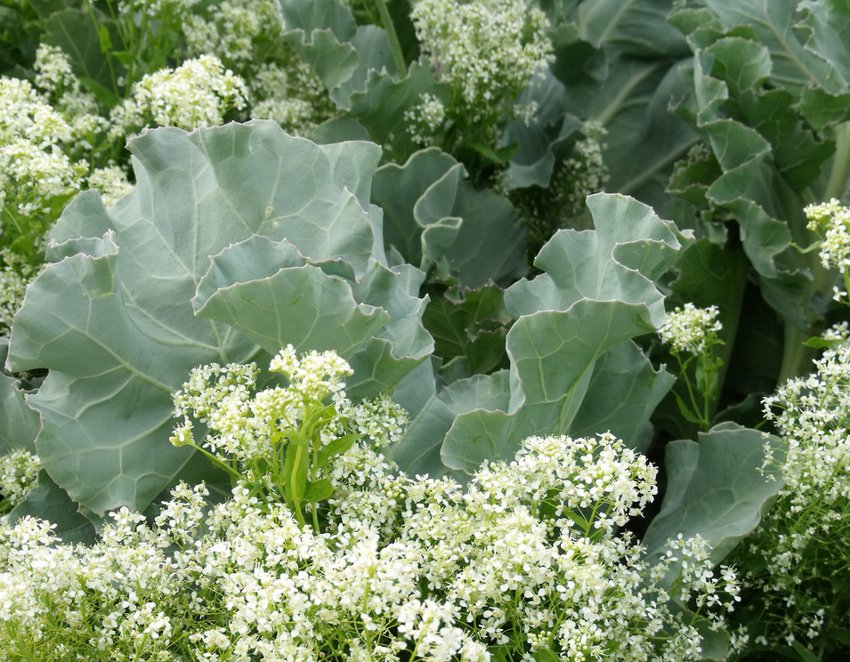
Sea kale, a winter hardy perennial option, is a fantastic addition to any garden. It’s an easy plant to care for that produces thousands of dainty white flowers from May to July. These flowers offer a sanctuary for pollinators, including butterflies and other vital insects in your garden. You’ll be delighted to know that this plant’s long tap roots only require extra watering during drought periods.
Sea kale’s tender spring shoots can be blanched by covering the plant with a clay pot. Later, they can be cooked and prepared like asparagus. Furthermore, the leaves are versatile and can be cooked just like any ordinary kale. So, whether you’re new to gardening or an experienced hand, knowing about sea kale is sure to add variety to your kale options.
Pet safety; Sea kale is moderately safe for pets, but contains high levels of calcium oxalate which can be harmful in high doses.
5. Horseradish- Armoracia Rusticana
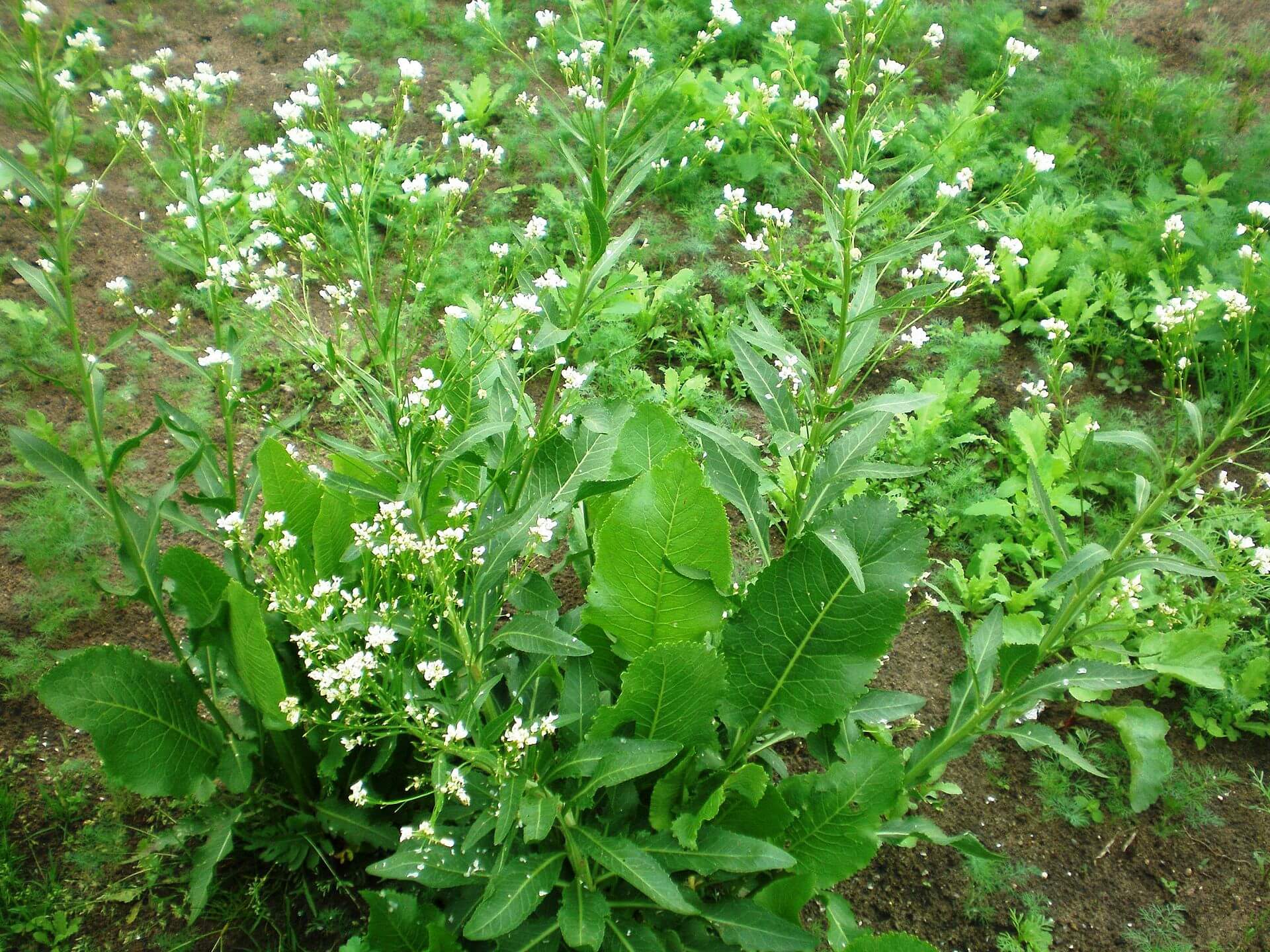
Horseradish is a wonderful plant to add to your garden. This long-lived perennial has an interesting growth cycle. It becomes dormant in the winter but re-sprouts every spring. Horseradish loves soaking up the sun but also do well in partial shade, making it an easy plant to manage. However, keep in mind that this plant has long tap roots that are prone to spreading uncontrollably. To avoid any issues, it might be best to consider planting it in a large pot. Another exciting feature about horseradish is that it can easily regrow from any root pieces left in the ground after harvesting in the winter.
It can be a spicy addition to any dish. The roots can be peeled and grated into sauces and salad dressings. This gives your food a fiery taste that will make your taste buds dance.
Pet safety; Horseradish should not be fed to pets.
6. Globe Artichoke- Cynara Cardunculus

Globe artichokes are truly amazing plants that offer both aesthetic beauty and yummy flavors! These perennials are primarily known for their delectable flower buds, which are perfectly edible. They are a versatile culinary ingredient that is a popular delicacy in many parts of the world. However, it’s important to keep in mind that if you leave the buds unharvested, they will mature into stunning, dark purple flowers that will provide a source of nourishment for the pollinators.
These plants prefer full sunlight and well-draining soil, ensuring they have all the nutrients they need to flourish. You’ll notice that they die back in the autumn, only to spring back to life in the springtime. They form large clumps that should be divided every five years.
During summer, the globe artichoke has the potential to offer around 10-12 edible buds that can be cooked and served in a variety of ways. We particularly enjoy ours steamed with a deliciously tangy dressing that adds an extra layer of flavor to this already delightful plant!
Pet safety; Artichoke is safe for dogs to consume.
7. Lovage- Levisticum Officinale

Lovage, an extraordinary herb with unique characteristics, belongs to the same family as celery and parsley. It is a low-maintenance plant and can go without much care while being grown in a variety of soil environments.
Its versatility as a herb lies in the many possibilities it offers for harvesting. The tender stalks can be blanched and consumed like celery. The leaves can be used in soups, and the roots and seeds are entirely edible.
However, it’s important to keep in mind that its growth might overpower other plants and herbs when planted in close proximity to them. Planting it away from other herbs is recommended. With Lovage, the possibilities are endless, and the herb is a must-have for any gardener looking to add some unique flavor to their palette.
Pet safety; Lovage is toxic to dogs, cats and horses.
8. Watercress- Nasturtium Officinale

Watercress is a lovely leafy green vegetable widely enjoyed as a tasty salad addition. It offers a slightly spicy and peppery taste that can liven up any dish!
One of the notable features of this beautiful produce is its natural habitat – watercress grows best in slow-moving clear waters. If you don’t have access to a water source, you can still grow it in consistently moist soil.
Watercress is a winter crop and the flavor is best when harvested before it flowers, so keep that in mind if you’re planning to enjoy it as part of your seasonal cuisine. When it comes to adding zest to your meals, you can’t go wrong with this lush green leaf!
Pet safety; Watercress is not safe for pets.
9. Jerusalem Artichoke- Helianthus Tuberosus

Jerusalem artichokes, commonly referred to as sunchokes, are a great perennial plant to grow in your garden due to their ease of growth and beautiful sunflower-like appearance. However, it is important to note that their easy nature can lead to invasive nature in your garden. This can be controlled by growing them in containers.
Apart from their attractive appearance, Jerusalem artichokes also produce delicious edible tubers that can be cooked in various ways, similar to potatoes. Harvesting the tubers is simple, as they can be collected once the plant starts to brown in autumn. On the other hand, leaving the tubers unharvested can lead to the sprouting of new plants. This insures that you have a fresh batch of sunchokes every year. Overall, Jerusalem artichokes are a fantastic addition to any garden, providing both beauty and sustenance.
Pet safety; Sunchoke is safe for pets.
10. Scarlet Runner Beans
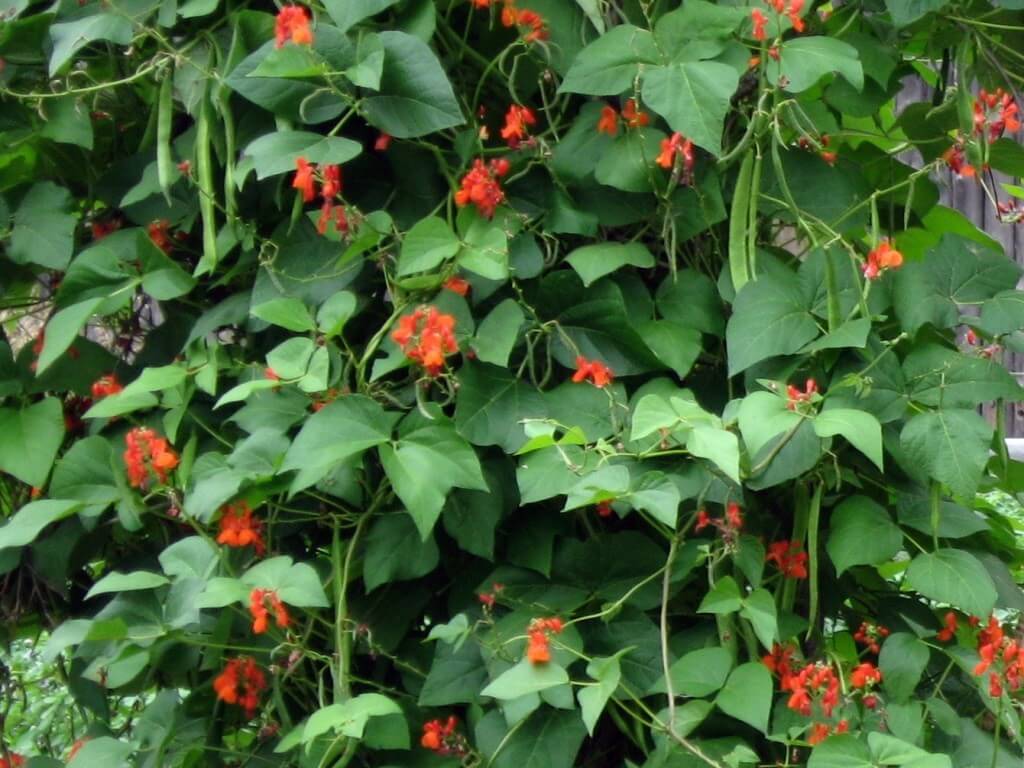
The spectacular scarlet runner bean, renowned for its stunning blooms, is a plant that is often viewed as an annual in gardens across the world. However, unlike the average green bean, the scarlet runner is thoroughly unique. It is in fact, a perennial species that forms tuberous roots.
The roots of the scarlet runner bean are completely edible. Moreover, this exceptional plant has the ability to grow to towering heights of over 15 feet, making it an impressive sight to behold.
We love to sow scarlet runner beans alongside corn and green beans, allowing foliage to weave and wind its way elegantly up trellises. Once this perennial vegetable begins to flourish, it will provide both deep-red blossoms and delicious, edible beans alike — truly a joy to behold!
Pet safety; Cooked runner beans are pet safe!
11. Good King Henry- Blitum Bonus-Henricus
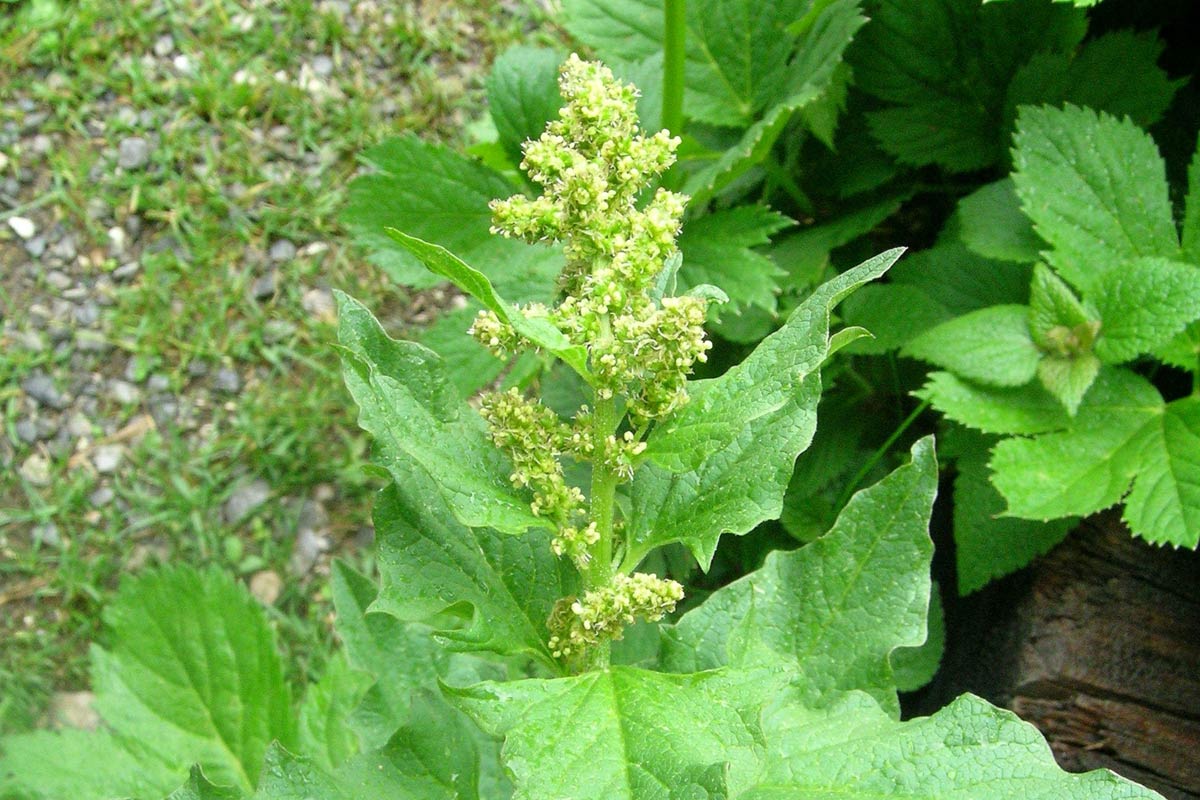
Good King Henry, the perennial vegetable also known as “poor mans asparagus” or “wild spinach”, is a perennial herb that has gained popularity among food enthusiasts due to its delectable leaves that are known to be cooked as spinach. The plant also produces tender and young shoots that are frequently blanched and consumed as an alternative to the more expensive asparagus.
One of the most significant advantages of cultivating Good King Henry is that once it is established, it can thrive for several years with minimal effort. However, it is noteworthy to mention that Good King Henry thrives best in cooler weather, and hot weather can cause the herb to bolt. Nevertheless, with proper care and maintenance, this plant can be a tasty and sustainable addition to any herb garden.
Pet safety; Good King Henry is 100% safe for pets.
12. Daylilies- Hemerocallis

If you are a fan of gardening or if you are interested in exploring new food options, then you might want to consider growing daylilies in your backyard. This beautiful perennial plant is well-known for its stunning blossoms that come in an array of colors, but what many gardeners do not know is that daylilies can also be a delicious treat!
You can enjoy the young shoots of the plant in the spring, either raw or sautéed, as well as the flower buds which have a green bean like taste. If that’s not enough, you can also eat the roots of the daylily plant which have a distinctly potato flavor.
While the flowers themselves only last one day, the plant will continue to regrow and produce more buds, shoots, and roots, providing you with a never-ending source of tasty, nutritious food straight from your own garden!
Pet safety; Daylilies are safe for dogs, but toxic for cats.
13. Sorrel- Rumex Acetosa

Sorrel truly is a remarkable perennial that checks all the boxes for any home gardener or plant enthusiast who is looking for a low maintenance, yet highly rewarding addition. It’s beautiful, it’s easy to care for, and it even adds an extra layer of flavor to your dishes! The sharp tasting leaves are simply perfect for enhancing the taste of any meal you’re cooking up in the kitchen.
But wait, there’s more! Did you know that sorrel is also incredibly drought tolerant? This means you can easily grow and maintain this plant with minimal water input, which is an added bonus for those living in areas with limited rainfall. One tip to keep in mind is to regularly pinch out the flower stems to ensure that your plant is constantly producing fresh and delicious leaves for your culinary endeavors. Sorrel is a must-have in any garden.
Pet safety; Sorrel is toxic for pets.
14. Water Spinach- Ipomoea Aquatica

Water spinach is such a cool and versatile perennial vegetable that has so many amazing culinary uses. It’s a semi aquatic perennial, which means it can survive in a wide range of environments, making it a popular choice for both gardeners and farmers.
One thing that’s really neat about water spinach is that almost every part of the plant is edible, which means it’s a treat for foodies who want to experiment with its unique flavor and texture. There are so many ways to enjoy water spinach, whether you go for the young shoots or try something else altogether.
Interestingly, water spinach is more closely related to sweet potatoes than spinach, which makes it all the more exciting to grow in your own kitchen garden or for farmers to add to their crops. It can grow well in ponds, bogs, irrigated fields, or even small ponds. So why not give water spinach a try in your garden this year?
Pet safety; Water spinach is not safe for pets.
15. Chives- Allium Schoenoprasum

Chives are a wonderful perennial herb that possess a unique set of qualities that make them an absolute must-have in any kitchen. One of their standout features is their delicate, yet flavor-packed flowers and stalks that are 100% edible.
They are a versatile herb that can be used to add a depth of flavor to a wide range of dishes and are particularly delightful as an addition to egg sandwiches.
These little guys may go dormant through the colder months, but come springtime they will burst back onto the scene with renewed vigor and vitality. So if you’re looking for an easy-to-grow herb that will elevate your cooking game, you simply can’t go wrong with chives. Why not give them a try and see the magic for yourself!
Pet safety; Chives are not safe for pets.
16. Ramps- Allium Tricoccum

Ramps are a type of plant that is immensely popular among foragers who consider them to be a true delicacy. These plants feature small pink flowers and a tasty bulb that has a unique flavor. For those who are curious, the taste of ramps is a delightful combination of spring onions and garlic.
Ramps prefer to grow in areas where the light is low, they need extra protection from the scorching rays of the summer sun.
It’s also worth knowing that ramps can take up to seven years to be ready for harvest if grown from seeds, while bulbs require three years before they’re ready. In other words, cultivating ramps is a long-term investment that requires patience and dedication.
Pet safety; Ramps are not safe for pets.
17. Fiddlehead Ferns- Matteuccia

Fiddlehead ferns, also known as “Ostrich Ferns,” are a fascinating and intriguing perennial plant that is worth exploring! These ferns are unique in their growing behavior, as they grow from rhizomes, and reproduce via spores during the spring season. Their growing pattern and fascinating anatomy make them an exciting plant for nature enthusiasts to observe and study.
One great feature of the Fiddlehead ferns is that they prefer moist soil and partial shade, which provides the ideal environment for their growth and development. If you’re planning to cultivate these lovely ferns, make sure you choose a spot in your garden that is both moist and sheltered from direct sunlight.
Fiddlehead ferns are also a delicacy to many people, as they have a short edible growing season, usually only lasting for a few weeks a year. During this time, they are at their most tender and flavorful, and are a popular ingredient in many culinary dishes. So, if you’re a foodie, Fiddlehead ferns might be a perfect plant to experiment with in the kitchen.
Pet safety; Fiddlehead ferns are safe for pets.
18. Radicchio- Cichorium Intybus
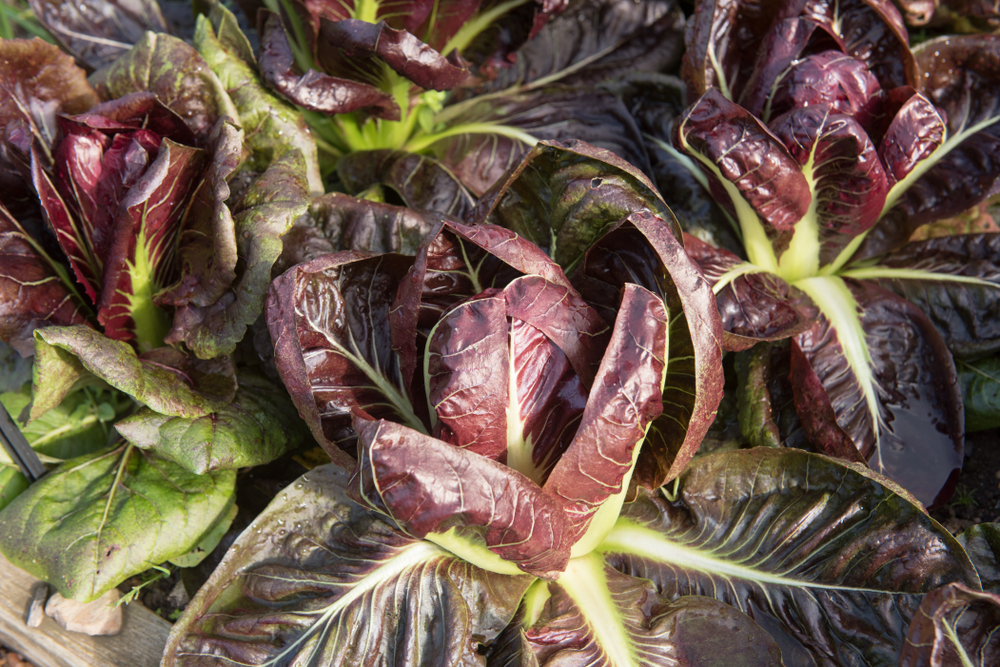
Radicchio is a fantastic cool-weather perennial with unique properties that every gardener should know about.
When properly nurtured, this plant sweetens with frost, while the summer heat can render it bitter. If you want to avoid the bitter flavor, it is critical to ensure the plant is not stressed by drought or excessive heat.
With proper care, you can harvest radicchio around 6-10 weeks post-transplanting.
Known for its distinctive and delectable flavor in Italian dishes, radicchio is also well-known for its versatility in the kitchen. One can create a delicious bittersweet radicchio by forcing it in the fall. So, if you want to add some exotic and delicious taste to your recipes, experiment with radicchio and take pride in a well-maintained, healthy plant that is full of flavor and beauty.
Pet safety; Radicchio is safe for pets.
Final Word on Perennials
Overall, by adding perennial vegetables to your garden, you can enjoy a steady supply of fresh produce year after year, straight from your backyard. Not only does this save you time and money, since perennials require less maintenance than common annuals, but it also promotes sustainability and reduces your carbon footprint. Perennial vegetables are also known for their resilience and hardiness, making them a great choice for gardeners who may not have a lot of gardening experience or who live in areas with extreme weather conditions. So, whether you’re looking to start a small garden or hoping to expand your existing one, consider adding some perennial vegetables to your plot and enjoy a bountiful harvest for years to come!

Pingback: 20 Ways You Can Become More Self-Sufficient - KeyStone Cottage
Pingback: Companion Planting - KeyStone Cottage
Pingback: How to save water in the garden - KeyStone Cottage
Pingback: Growing Abundance: Hugelkultur Beds And Sustainable Permaculture Gardening - KeyStone Cottage